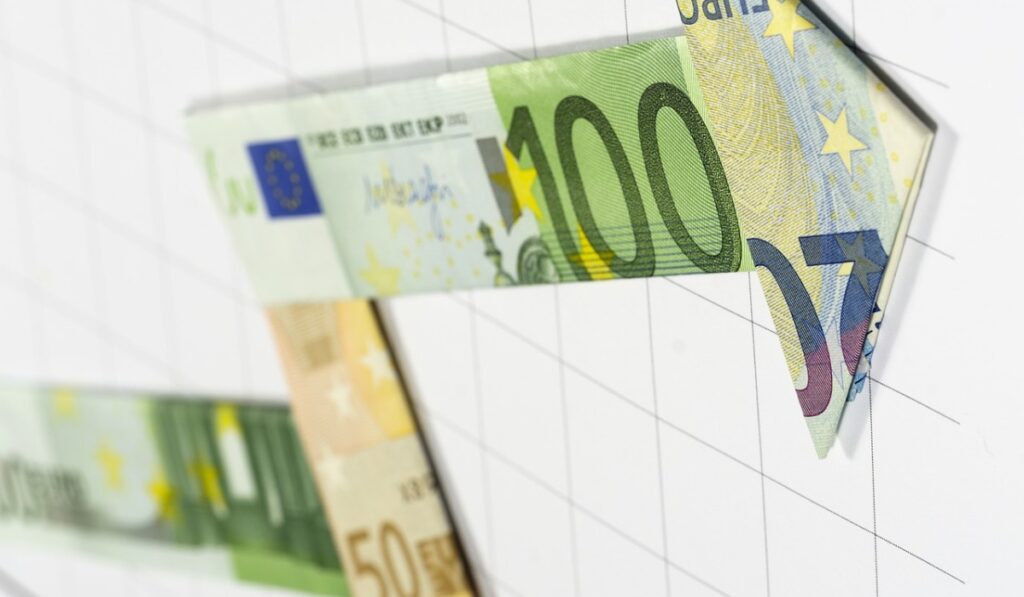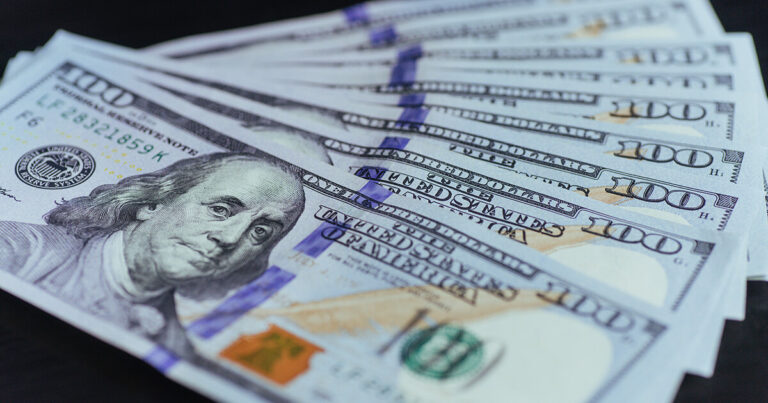
It’s official – Joe Biden assumed the US presidency on Wednesday peacefully. That said, how did the forex market react to the peaceful transition among other fundamentals? Well, it was a tough week for the safe-haven currencies, with currency sentiment analysis primarily driven by covid 19 news, US politics and economic updates.
In the third week of January ending 24th, several fundamentals combined forces to uplift the riskier assets against the US dollar. Now let’s look at the fundamentals that drove the forex market.
Forex Fundamental News

Covid 19 News Twin Effect
The covid news continues to affect forex fundamental news in two ways, both positive and negative.
On the positive front, many countries continue with the covid 19 vaccination rollout, which began late December. However, the sight to the end of the pandemic is still far away. Since the vaccination rollout inception, nearly 50 million have received the dose.
On the negative front, globally close to 100m people have been affected by the disease and over 2 million have died. Scientists have warned that the new covid 19 variants spread faster and are 30% more deadly than the original virus. In response, many countries have reintroduced lockdown measures negatively affecting economies.
US Politics
Immediately after the inauguration, Joe Biden signed executive orders to roll back the Trump era. Biden’s administration targets four significant crises facing the US: Coronavirus pandemics, climate change, racial injustice, and economic downturn.
Few days into Joe Biden’s administration, investors raised concerns on his ability to administer 100 million covid 19 vaccines in 100 days and pass the $1.9 trillion stimulus package.
Economic Updates
It was a busy week in the financial journal, and many countries posted positively skewed data that supported their currencies. The US posted impressive results, generating risk-on appetite.
Despite coronavirus pandemics, China’s 4th quarter economy grew by 2.6% to support the commodity-related assets.
Forex Oil Trading

According to Investing.com, oil prices rallied in the first half of the week. The prices then dropped and ended the week at 52.27. Continued spikes in covid 19 cases in China and stockpiles negatively affected forex oil trading, resulting in its downfall.
Economic Review And Performance Of The G7 Currencies
Table: G7 performance summary
| Currency | 18th Jan | 24th Jan | Average price | Percentage change | Remarks |
| USD | 90.754 | 90.212 | 90.408 | 0.597 | drop |
| GBP/USD | 1.3584 | 1.3683 | 1.3661 | 0.7103 | increase |
| EUR/USD | 1.2076 | 1.2173 | 1.2135 | 0.7866 | increase |
| USD/CHF | 0.8906 | 0.8856 | 0.8874 | 0.5726 | drop |
| USD/JPY | 103.69 | 103.81 | 103.69 | 0.06 | increase |
| USD/CAD | 1.2754 | 1.2719 | 1.2700 | 0.1021 | drop |
| AUD/USD | 0.7679 | 0.7715 | 0.7719 | 0.1753 | increase |
| NZD/USD | 0.7106 | 0.7184 | 0.7161 | 0.5884 | increase |
The US Dollar Limps Back To The Red
The worst performing g7 currency for the week was the American dollar. After two consecutive weekly upbeats, the dollar deteriorated by 0.59% back to the reds, but still above 90. In the previous week, the greenback had strengthened by 0.75% to 90.772.
With few economic statistics from the US, the greenback was significantly driven by covid 19 news, politics, and monetary policies. On Monday the greenback traded in the green zone, but traders shied away from it. The move against the dollar was likely on positive vibes fueled by optimism on more economic stimulus and positive financial data.
Despite record-breaking coronavirus infections over the week, the US posted an impressive economic update. One, weekly jobless claims for the week ending 24 Jan dropped from 926k to 900k but had muted impact.
Second, Philly FED Manufacturing figures increased marginally from 11.1 to 26.5. Third, the PMI service sector rose from 54.8 to 57.5 and manufacturing PMI increased from 58.1 to 59.1.
On the monetary policies, talks of an economic recovery stimulus package sent the greenback southwards to end the week in the red. The continuing covid 19 infections were also damaging to the dollar.
GBP/USD
The United Kingdom had a relatively busy week in the economic journal, with December inflation being the primary focus in the first half of the week. An increase in inflation rate supported the pound midweek.
Coronavirus news affected currency sentiment analysis of the Pound in two ways. On one side, the vaccination rollout supported the Pound while continued spikes and new covid 19 variants were harmful to the Pound.
The annual inflation rate went upwards to 0.60% from 0.30%, with consumer prices rising by 0.30% in December. Previously, consumer prices had dropped by 0.1%.
However, unfavourable economic data on Friday caused the Pound to lose the gains made earlier in the week. The manufacturing index fell from 57.5 to 52.9, and the services sector slipped from 49.4 to 38.8.
In the week ending 24 Jan, the sterling Pound rose by 0.71% to 1.3686, with Friday’s drop accounting for 0.34% loss. In the week previous week, the Pound had strengthened by 0.16%.
Euro Analysis Forex

The Eurozone had a busy week on the economic diary front posting positively skewed financial data. In line with the positive economic data, the economic sentiment indicator improved from 54.4 to 58.3. However, towards the last week, consumer confidence disappointed, dropping from -13.9 to -15.5. Also, the Eurozone’s manufacturing and service sectors eased, pulling the euro down.
On the fiscal policy front, the ECB left the monetary policy unchanged, leaving the euro’s performance to the press conference. The coronavirus inoculation rollout, though shaky in most parts of the Eurozone, uplifted the euro.
However, covid 19 mutations weighed against the Euro, and Eurozone’s member states reverted lockdown measures. According to the euro analysis forex charts, the euro rose by 0.74% to 1.2171 against the American dollar. In the week before, the euro had fallen by 1.11% to the dollar.
CHF/USD
The swiss ended the week in positive territories this week, likely on improved economic data, ECB sentiments and positive coronavirus news. On the financial front, Switzerland’s producer and import price index improved by 0.5% annual inflation rate increased to 3%.
Amid the positive sentiments from covid 19 rollout, coronavirus infection spikes and new variants weighed heavily on the Swiss franc. The Swiss franc ended the week stronger by 0.5726 to 0.8856 against the American dollar.
USD/CAD
It was a relatively busy week in Canada on the economic diary. In a mixed bag, the inflation rate remained steady at 1.5%, consumer prices dropped by 0.2%, and retail sales rose by 1.3%. While the economic data supported the currency sentiment analysis of Canadian dollar, poor oil prices towards the end of the week disappointed.
On Wednesday, the Bank of Canada delivered its 1st financial policy decision of the year, which had a muted impact on the Loonie. The bank kept rates lower until 2023. According to Investing.com, the Loonie fell slightly by 0.01% to close at 1.2733 to the US dollar. In the week before, the Loonie had weakened by 0.24%.
AUD/USD
The Aussie dollar reversed a previous week’s loss and grew by 0.16% to 0.7715. In a mixed bag, the consumer sentiment index dropped by 4.5%, retail sales figures plumbed, and the unemployment rate fell from 6.8% to 6.6%.
In the week, employment rose by 50k, primarily attributed to part-time jobs. Despite the high employment figures, it harmed the Aussie dollar. The Australian ability to contain the coronavirus bolstered its economic recovery efforts.
NZD/USD
In a relatively busy week in the economic diary, the Kiwi Dollar closed the week stronger by 0.79% to 0.7189 against the US dollar. Currency sentiment analysis of the kiwi dollar was significantly driven by economic data, covid 19 news, and US politics.
On the financial front, business confidence dropped, the inflation rate remained unchanged, and consumer prices increased by 0.5%.
USD/JPY
In a busy week in Japan on the financial journal, the Japanese Yen nudged up by 0.07% to 103.78 against the American Dollar. In the week before, the Yen had gained 0.09% to 103.85.
In a mixed bag that failed to provide direction for the Yen, Industrial production dropped by 0.5%. Trade data widened, with exports rising by 2% and imports falling by 11.6%.
Basic consumer prices dropped by 1%, and both the manufacturing and service sectors contracted slightly. Rising cases of covid 19 and new variant concerns weighed heavily against the Japanese yen.
On the monetary policy front, the BoJ policies did not affect Yen’s currency sentiment analysis.
Conclusion
Overall, currency sentiment analysis reveals that the American dollar weakened and lost against all other g7 currencies, except the Japanese yen. Meanwhile, covid 19 vaccination rollout continues, but victory against the deadly disease is still very far.
Related: Weekly Top Forex News from 11th to 17th January 2021




